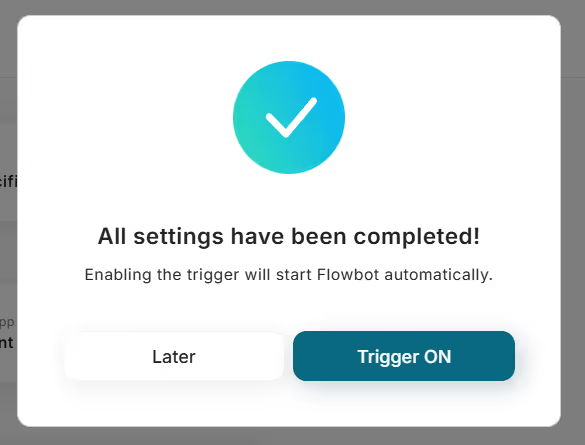1) Click on the "Try this template" icon.

2) A display like the following will appear, click "OK".

If it is displayed as follows, the copy has been made.

The title and details can be edited by clicking. Please change them as necessary.
Click the icon with "!" displayed on the right in order from the top to set the operation.
The template is saved in My Projects.
The copied template can also be opened from My Projects.

Step 3: Set the Trigger
Click on "App Trigger: When a file is posted to the channel".

Step 4: Set the Slack Action
1) Select the trigger action "When a file is posted to a channel" and click "Next".

2) Enter the required fields.
The trigger interval varies depending on the subscription plan.
It is generally recommended to set it short.
Refer to this for details on each plan.
List of feature restrictions and usage limits for each plan | Yoom Help Center (intercom.help)
If the app is linked, you can select the channel ID from the options.
Once selection is complete, click "Test", and after a successful test, click "Save".

Step 5: Set the Slack Action
1) Return to the flow and click on the "Integrate with App: Download Posted File" icon.

2) Select the action "Download Posted File" and click "Next".

3) Enter the download link for the file.
If the app is linked, you can use the retrieved values from the initial operation to enter it.
Select from the options, and once the input is complete, click "Save".

Step 6: Set the Dropbox Action
1) Return to the flow and click on the "Integrate with App: Upload File" icon.

2) Select the action "Upload File" and click "Next".

3) Enter the required conditions.
If the app is linked, you can use the retrieved values from Slack to enter it.
Set each condition as shown below, click "Save".


This completes the flow of 【Storing files sent on Slack to Dropbox】.
Step 7: Test and Verify
Once the setup is complete, a display like the following will appear, click "Turn on Trigger".
Start the flow bot and verify that it operates correctly.

Here is the template used this time














.avif)








.avif)
.avif)
.avif)






